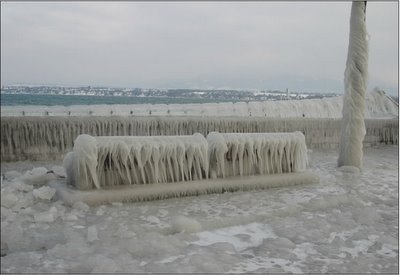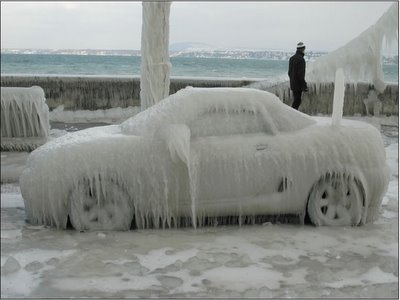So far in this blog, I have managed to keep politics at bay, which is something I never promised to do, but something which, I think, keeps us focused more on what we have in common than what we don't share.
As you might have guessed, I'm breaking with that tradition today.
Sometimes, something comes along which is so bone-headed, so counter-productive, that to say nothing after you find out about it is, in and of itself, a political statement.
As anyone who has read my columns in The Mercury has probably guessed by now that I am no great fan of the Bush administration, something I now share, if recent polls are to be believed, with about 80 percent of my fellow Americans.
Something else I share with, what I suspect are a majority of my fellow Americans, is a near-reverent appreciation for our national parks.
As a child, my parents took my sister and I on many trips wherein we visited some of America's most stunning natural spectacles -- the Grand Canyon, Rocky Mountain National Park, Arcadia, Mt. Ranier, Canyonlands, Bryce Canyon and Arches national parks.
Those experiences changed me forever and helped me to understand how things can be so different, and yet all be the same in the natural world.
And we have treasures right here too.
Right down the road, we have Valley Forge, and Gettysburg a short drive away.
It seems that, with increasing frequency, we have to defend these assets not only from developers who want to cash in on the popularity of a publicly owned landmark by encroaching ever closer on its borders, but even from the increasingly compliant government whose charge is supposed to be protecting this national heritage for all time.
Which brings me back to politics.
Those who have been playing close attention to how the Bush administration operates may have noticed that Dick Cheney long ago learned that achieving unpopular goals is much easier by working the many levered handles of bureaucracy, then by publicly asking permission of a voter-sensitive Congress.
Thus many things the American people would unlikely vote for have been implemented by quietly changing some arcane rules.
The latest chapter was revealed in a Washington Post report I posted today on our Green Spotlight on the Green Pages. Since I am unable to get this dang computer to properly insert the handy "just click here" link, I'm going to have to do this the old fashioned way and just tell you the address for the article.
It is http://www.washingtonpost.com/wp-dyn/content/article/2008/05/15/AR2008051502880.html?sub=AR
What it boils down to is that the now-absurdly named Environmental Protection Agency is thinking of making an arcane change in its rules to allow them to change the way air pollution is calculated.
This has alarmed many park workers and park advocates who have for 30-some years been tracking poor air quality at a number of national parks, Great Smokey Mountains being, ironically, among the worst.
A study by the National Parks Conservation Association three years ago found that one of every three of the parks is choking on pollution, according to ABC News.
Of the 390 parks within the National Park System, 150 are located in places that fail to meet one or more national healthy-air standards.
From Acadia National Park in Maine to the Cascades in Washington state, sulfur dioxide, nitrogen oxides, carbon dioxide and mercury can be found at air-monitoring stations in spite of a 30-year congressional mandate to restore clean air to the parks for this and future generations.
Now the EPA is trying to undermine that mandate with a rule change that would allow the construction of new coal-fired power plants, the number one generator of this kind of air pollution nearer to national parks than is currently allowed.
To do this, they need to get around a federal rule, enacted by that pesky Congress in the Clean Air Act, which requires the highest level of air pollution reductions in "Class 1" areas, which include our national parks.
According to the Energy Information Administration, there are 3,200 power plants in the United States, the majority of them fueled by coal.
A General Accounting Office report says that together they emit 35 percent of the nation's carbon dioxide, 37 percent of its mercury, 23 percent of its nitrogen oxides, and 67 percent of its sulfur dioxide.
"Spikes" in those pollutants, which coincide with high demands for electricity and which have been measured at the parks for 30 years, would be ignored under the EPA's proposed changes.
Instead, the pollutants would be "averaged" and spread out over a longer period of time, which would have the effect of making them seem less harmful.
"It's like if you're pulled over by a cop for going 75 miles per hour in a 55 miles-per-hour zone, and you say, 'If you look at how I've driven all year, I've averaged 55 miles per hour,' " Mark Wenzler, director of the National Parks Conservation Association's clean-air programs, told the Post. "It allows you to vastly underestimate the impact of these emissions."
Hopefully, the administration has underestimated Congress' willingness to have its mandates undermined by bureaucracy and Congress will put a stop to this before it's too late.
Otherwise, the next time you take your family to a national park, it may not be the view that leaves you breathless.
Labels: Dick Cheney, National Parks, smog

 RSS
RSS


